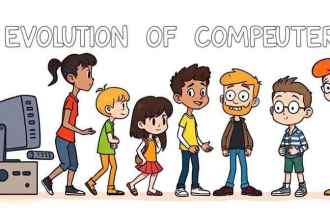👋 C++ code to flowchart converter online free…
Have you ever looked at a C++ program and felt a little lost?
You’re not alone. C++ is a powerful language, but sometimes the logic inside the code isn’t easy to follow — especially when there are loops, conditions, and functions all mixed in.
This is where flowcharts come in. Flowcharts show what your code is doing in a step-by-step picture. They help you (and others) understand the program without needing to read every line of code.
And the best part?
There are free online tools for converting code to flowchart — no need to draw anything yourself!
💻 What Does a C++ to Flowchart Converter Actually Do?
Let me explain it simply. These tools:
- Take your C++ code
- Look at each part like
if,for, orwhile - And turn it into a flowchart — using boxes for actions and diamonds for decisions
It’s like turning your program into a storybook that’s easier to read and share.
🙋 Why Use These Tools? Real Reasons That Matter
Here’s why people — especially beginners, students, and even teachers — love using these tools:
🎯 Makes Code Easy to Understand
Instead of reading line after line, you get a visual flow of how your program works.
🧩 Helps You Find Mistakes
If your code isn’t working, a flowchart can help you see where the logic is broken.
🗣️ Great for Teaching or Presenting
Explaining code to someone? A flowchart makes it super easy to show the logic without making them read code.
📑 Useful in School or Work Projects
You can add these charts to reports, documentation, or assignments to show how your code runs.
🤖 Even AI and Debugging Tools Work Better with Diagrams
Some AI tools and smart IDEs can even read flowcharts better than plain code.
🔍 What to Look For in a Good Online Converter Tool
Here are the things you should check before using any tool:
| What to Check | Why It’s Important |
|---|---|
| ✅ Supports C++ code | Not all tools understand C++ syntax |
| 🆓 100% free to use | You shouldn’t have to pay or register |
| 📲 Works in browser | No need to download anything |
| 📥 Download options | So you can save the flowchart as image or PDF |
| 🔄 Supports all logic types | Like loops, conditions, and functions |
| 📱 Mobile friendly | Nice to have on phone or tablet too |
🛠️ Step-by-Step: How to Convert Your C++ Code Into a Flowchart
Let me walk you through it. It’s easier than you think:
✅ Step 1: Visit a Free Tool
Go to a site like TechBeamers Flowchart Tool. It’s free and easy.
✅ Step 2: Paste Your Code
Here’s a small sample:
int x = 20;
if (x > 10) {
cout << "Big";
} else {
cout << "Small";
}✅ Step 3: Click on “Generate”
The tool reads your code and turns it into a chart. You don’t need to do anything extra.
✅ Step 4: View and Download
You’ll see a neat flowchart. You can save it, print it, or just look at it for better understanding.
🔎 Example: See It In Action
Let’s take another small example:
int marks = 65;
if (marks >= 50) {
cout << "Pass";
} else {
cout << "Fail";
}🧾 Flowchart (in words):
[Start]
↓
[marks = 65]
↓
[marks >= 50?] → Yes → [Print: Pass] → [End]
↓
No
↓
[Print: Fail] → [End]You can imagine how easy this is compared to reading raw C++.
🧰 Best Free Online Tools to Try
Here are some free tools that work really well:
| Tool Name | Why You Should Try It |
|---|---|
| TechBeamers Flowchart Generator | Built for C++, clean output, free download |
| Code2Flow | Good for small code blocks |
| Draw.io | Manual tool, great for customizing flowcharts |
| Algolist Flowchart Tool | Simple tool focused on C/C++ only |
| Lucidchart (Free Plan) | More advanced, good for school projects |
🧠 What Types of Code Can These Tools Understand?
Most tools can handle these:
if,else, andelse if- Loops like
for,while,do-while switch-casestatements- Functions and their return values
- Nested structures (like loops inside loops)
Just keep your code clean and properly written, and these tools will work fine.
❓ FAQ – About Free C++ to Flowchart Tools
If you’re new to using tools that turn C++ code into flowcharts, don’t worry. These questions come up all the time, and here are the answers in plain, easy words.
Q1. Is it okay to paste my C++ code into these tools? Will it be safe?
Yes, it’s totally okay — as long as the tool runs in your browser and doesn’t send your code online. Many tools just work locally on your device, so your code stays private.
Q2. Can I save the flowchart that the tool creates?
Yes! Most tools let you download the flowchart. You can save it as a picture or PDF — and even share it in your class project or notes.
Q3. What if my code is really long? Will the tool still work?
Some tools can handle big code, but if the chart looks messy or confusing, just split your code into smaller parts. That way, you’ll get a neat flowchart every time.
Q4. I’m just starting to learn C++. Can I still use these tools?
Of course! These tools are made for people like you — beginners, students, and anyone who wants to see how their code works in simple steps.
Q5. Do I have to sign up or pay to use them?
No, not at all. Most of the best tools are free to use and don’t ask you to create an account. You just open the site, paste your code, and you’re good to go.
📝 Bonus Tips for Better Results
Want clearer flowcharts and smoother results? These little tips can help you get the best out of the tool.
- ✅ Keep your code simple and clean
- ✅ Test with small code blocks first
- ✅ Use comments in code to better understand each section
- ✅ Try 2–3 tools and pick the one that fits your style
- ✅ Use the flowchart as part of your project or report for extra marks!
🏁 Final Words Before You Try It
C++ is powerful, but it doesn’t always have to be hard.
If you’re learning, debugging, or teaching code — using a flowchart converter can really help.
You don’t need design skills or paid software. Just use a free online tool, and see your code come to life in a simple diagram.
👉 Start small, practice often, and you’ll get better fast. Flowcharts can be your secret weapon!






